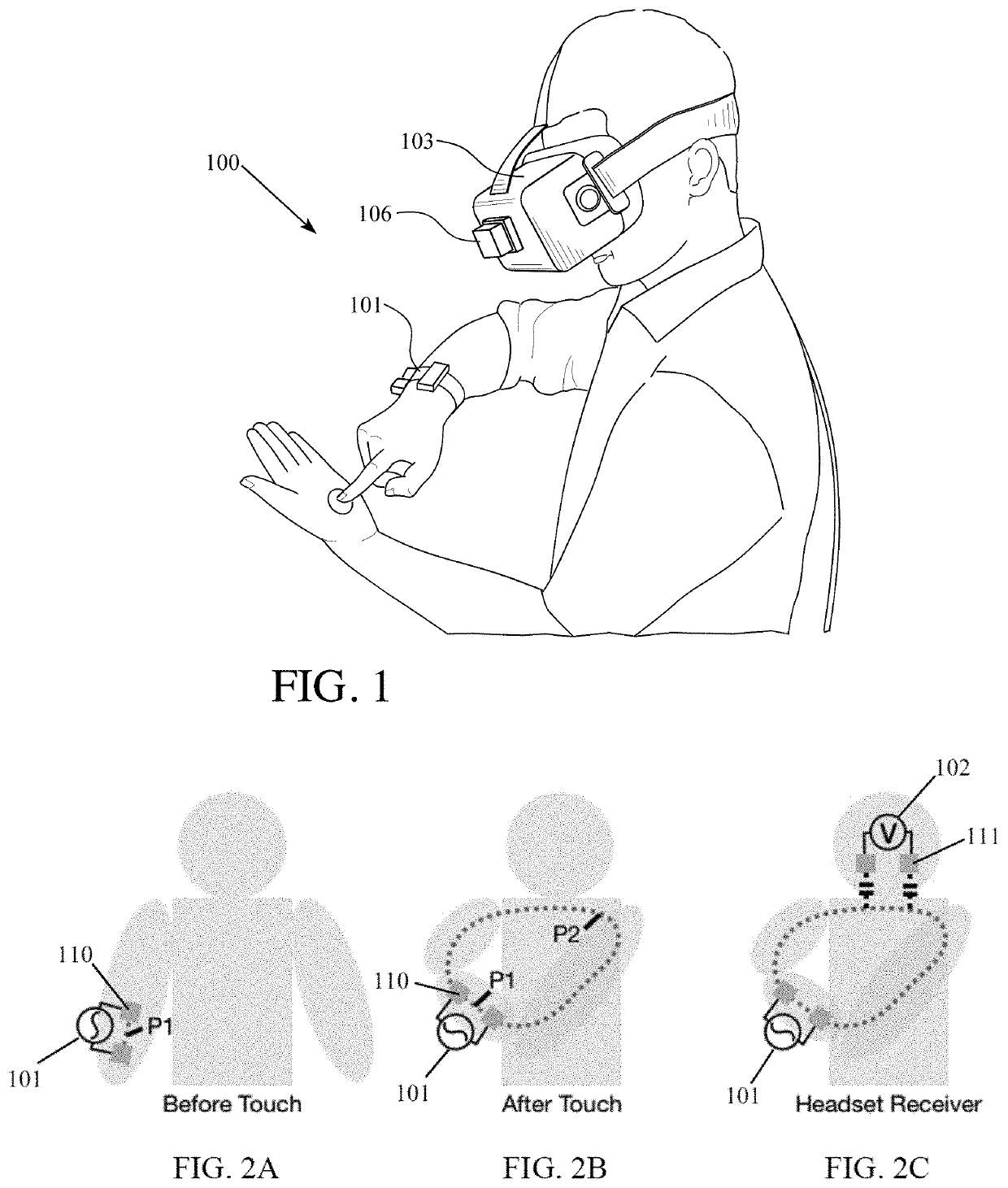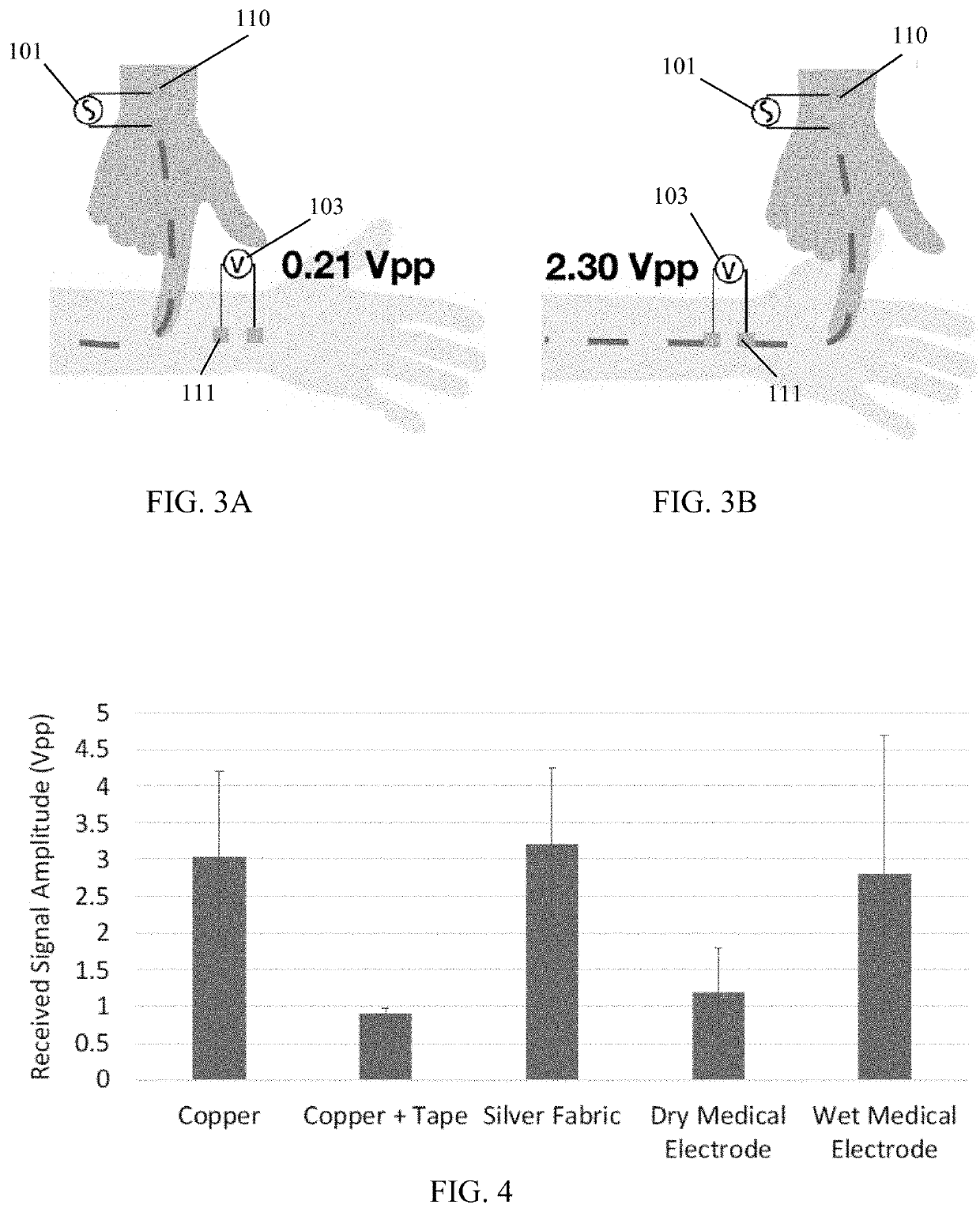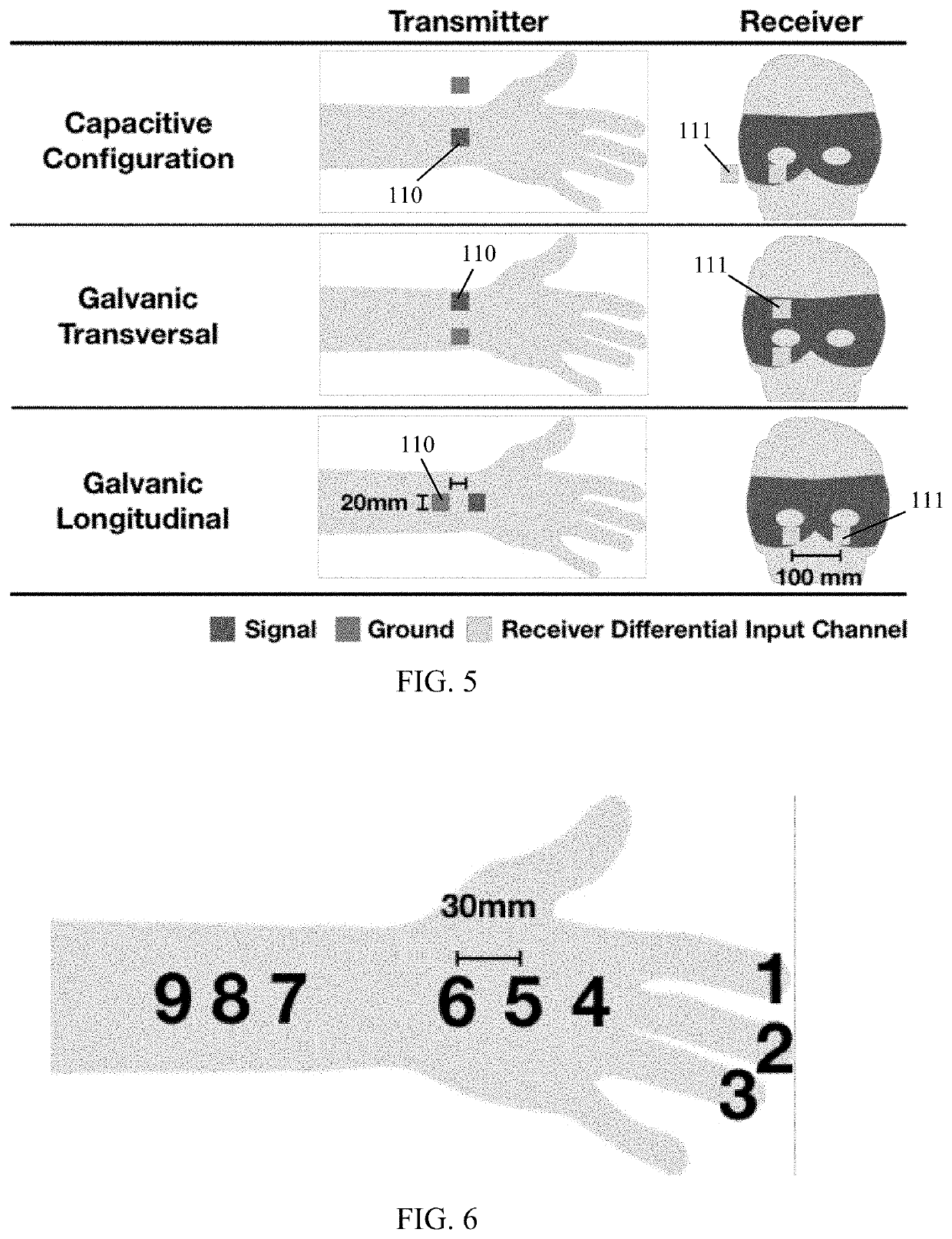System and method for robust touch detection for on-skin augmented reality/virtual reality interfaces
a virtual reality and touch detection technology, applied in the field of system and method for robust touch detection for on-skin augmented reality/virtual reality interfaces, can solve the problems of inability to detect the touch, the user must take extra care, and the approach is invasive, and achieves high accuracy tracking, simple instrumentation, and robust touch segmentation
- Summary
- Abstract
- Description
- Claims
- Application Information
AI Technical Summary
Benefits of technology
Problems solved by technology
Method used
Image
Examples
Embodiment Construction
[0021]The system and method of the present invention leverage the conductivity of the human body, which serves as a transmission medium for radio frequency (RF) signals. In one embodiment, the augmented reality / virtual reality (AR / VR) interface 100 comprises an emitter 101 and a receiver 102. As shown in FIG. 1, the emitter 101 can be a smartwatch or similar body-worn device and comprises two electrodes 110 used to transmit the signal into the user's body. The receiver 102 is housed within a AR / VR headset 103 and is capable of detecting the signal from the emitter 101.
[0022]When a user wears an emitter 101 on the arm, wrist, hand, or other body part, the RF signal is conducted through the user's skin on a short path (P1) between the electrodes 110 of the emitter 101, as shown in FIG. 2A. When a user touches their arm or hand, a second, longer path (P2) is formed through the opposite arm from which the emitter 101 is worn. Path P2 is depicted on FIG. 2B. Thus, the RF signal emitted f...
PUM
 Login to View More
Login to View More Abstract
Description
Claims
Application Information
 Login to View More
Login to View More - R&D
- Intellectual Property
- Life Sciences
- Materials
- Tech Scout
- Unparalleled Data Quality
- Higher Quality Content
- 60% Fewer Hallucinations
Browse by: Latest US Patents, China's latest patents, Technical Efficacy Thesaurus, Application Domain, Technology Topic, Popular Technical Reports.
© 2025 PatSnap. All rights reserved.Legal|Privacy policy|Modern Slavery Act Transparency Statement|Sitemap|About US| Contact US: help@patsnap.com



